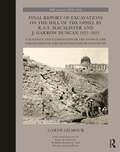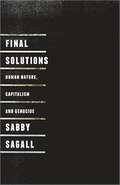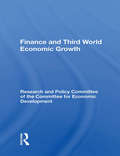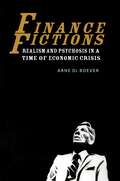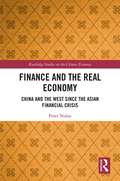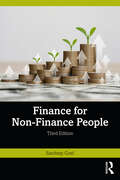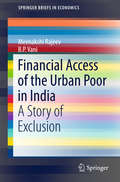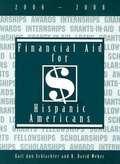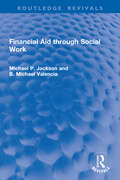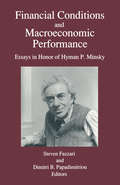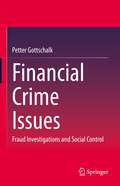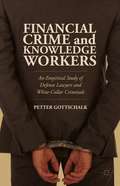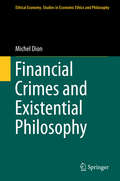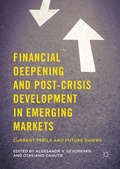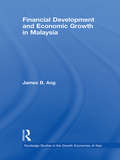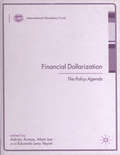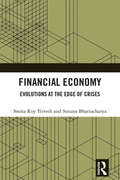- Table View
- List View
Final Report of Excavations on The Hill of The Ophel by R.A.S. Macalister and J. Garrow Duncan 1923–1925: Catalogue and Examination of the Finds in the Collections of the Palestine Exploration Fund (The Palestine Exploration Fund Annual)
by Garth GilmourFinal Report of Excavations on the Hill of the Ophel by R.A.S. Macalister and J. Garrow Duncan 1923–1925 contains the publication of the finds from this excavation a century ago that have been curated and stored in the archives of the Palestine Exploration Fund in London.This volume includes a history of the excavation and detailed descriptions and illustrations of finds ranging from the Chalcolithic through to the Ottoman periods. These include pottery, metal, bone and glass objects, seal impressions, figurines, clay tobacco pipes and other items, many of which have never been published before. Among the more significant finds from the excavation, both the subject of special studies, are an incised pottery sherd with images of two deity figurines interpreted as representing Yahweh and Asherah, and two incense burners that contribute to our understanding of the trade in incense in the Near East in the second and first millennia BCE.This volume will be of interest to students and researchers of ancient near eastern archaeology, and particularly those engaged in research in the southern Levant. The report complements the publications of the many subsequent excavations in the same area of Jerusalem, a location that is still today the focus of much attention for historical, religious and political, not to mention archaeological, reasons.
Final Solutions: Human Nature, Capitalism And Genocide
by Sabby SagallFinal Solutions offers a ground-breaking and genuinely unique analysis of modern genocide. Sabby Sagall draws on the insights of the Frankfurt school and Wilhelm Reich to create an innovative combination of Marxism and psychoanalysis. He argues that genocide is a product of an ‘irrational’ destructiveness by social classes or communities that have suffered major historical defeats or similar forms of extreme stress. <P><P> Sagall shows how the denial of human needs and the ensuing feelings of isolation and powerlessness propel groups to project their impotent rage, hatred and destructiveness engendered by these defeats on to the 'outsider' and the 'other'. <P><P> The book applies this theoretical framework to four modern genocides – that of the Native Americans, the Armenians, the Jews and the Rwandan Tutsis. This is a truly pioneering contribution which adds to our understanding of some of the darkest hours of humanity – and how we can stop them from happening again.
Finance
by Nico van der WijstBy providing a solid theoretical basis, this book introduces modern finance to readers, including students in science and technology, who already have a good foundation in quantitative skills. It combines the classical, decision-oriented approach and the traditional organization of corporate finance books with a quantitative approach that is particularly well suited to students with backgrounds in engineering and the natural sciences. This combination makes finance much more transparent and accessible than the definition-theorem-proof pattern that is common in mathematics and financial economics. The book's main emphasis is on investments in real assets and the real options attached to them, but it also includes extensive discussion of topics such as portfolio theory, market efficiency, capital structure and derivatives pricing. Finance equips readers as future managers with the financial literacy necessary either to evaluate investment projects themselves or to engage critically with the analysis of financial managers. Supplementary material is available at www. cambridge. org/wijst.
Finance And Development: The Role Of International Commercial Banks In The Third World
by Michael DaCostaAlthough commercial banks have played an increasingly important role in providing capital to developing nations, many analysts argue that private financing poses risks both to borrowing nations and the stability of the international economic system. In response, Mr. DaCosta demonstrates that developing nations that adopt appropriate policies can gain substantially by drawing on private sources of capital. His analysis indicates that many criticisms of the role of commercial banks are unfounded and that debt problems in LDCs typically are related to inadequate reserve and external debt management policies in the borrowing countries themselves. Emphasizing that economic growth in LDCs often is constrained by balance-of-payment deficits, Mr. DaCosta shows that nations relying on private capital frequently experience higher-than-average growth rates and argues that the advantages of unconditional or untied aid generally outweigh the constraints imposed by the multilateral aid agencies. In conclusion, he outlines specific policies developing nations can adopt to reduce financial risk and, turning to the needs of the poorest of the LDCs, examines a variety of proposals aimed at increasing the flow of concessional assistance to those countries that cannot qualify for commercial bank funds.
Finance And Third World Economic Growth
by John Edwards"I would like to thank the business and education leaders who served on the CED Subcommittee on Finance and Third World Economic Growth for their diligent work and practical contributions. In particular I would like to thank Subcommittee Chairman James W. McKee, chairman of the executive committee of CPC International Inc., whose leadership, insight, and interest in these issues guided the subcommittee through to publication of the policy statement. I would also like to acknowledge the outstanding work of Professor Isaiah Frank of the School of Advanced International Studies at Johns Hopkins University, who served as project director. His knowledge in this field and expertise in drafting the statement clarified many complex issues. Thanks also go to Research Assistant Patricia Pollard of Johns Hopkins University, who was of valuable assistance to Dr. Frank in compiling the necessary research. William "
Finance Fictions: Realism and Psychosis in a Time of Economic Crisis
by Arne De BoeverFinance Fictions takes the measure of what it means to live in a world ruled by high finance by examining the tension between psychosis and realism that plays out in the contemporary finance novel. When the things traded at the center of the economy cease to be things at all, but highly abstracted speculations, how do we come to see the real? What sorts of narrative can accurately approach the actual workings of a neoliberal economy marked by accelerating cycles of market crashes, economic and political crisis, and austerity?Revisiting such twentieth-century classics of the genre as Tom Wolfe's Bonfire of the Vanities and Bret Easton Ellis’s American Psycho, De Boever argues that the twenty-first century is witnessing the birth of a new kind of realistic novel that can make sense of complex financial instruments like collateralized debt obligations, credit default swaps, and digital algorithms operating at speeds faster than what human beings or computers can record. If in 1989 Wolfe could still urge novelists to work harder to “tame the billion-footed beast of reality,” today’s economic reality confronts us with a difference that is qualitative rather than quantitative: a new financial ontology requiring new modes of thinking and writing.Mobilizing the philosophical thought of Quentin Meillassoux in the close reading of finance novels by Robert Harris, Michel Houellebecq, Ben Lerner and less well-known works of conceptual writing such as Mathew Timmons’ Credit, Finance Fictions argues that realism is in for a speculative update if it wants to take on the contemporary economy—an “if” whose implications turn out to be deeply political. Part literary study and part philosophical inquiry, Finance Fictions seeks to contribute to a new mindset for creative and critical work on finance in the twenty-first century.
Finance and the Real Economy: China and the West since the Asian Financial Crisis (Routledge Studies on the Chinese Economy)
by Peter NolanThe different approach taken by China and the West towards finance and the real economy rests upon philosophical foundations that have diverged fundamentally since the Ancient World. Since the Asian Financial Crisis in 1997–98 a tremendous transformation has taken place in the financial systems in both China and the West. China has persisted steadily with reform of its financial system but it remains heavily protected from international competition. In the West regulatory structures have been progressively dismantled, permitting an unprecedented secular expansion of asset prices and debt relative to GDP. The structure crashed to the ground with the collapse of asset prices in 2008–09. In the decade since the GFC asset prices and debt in the West have rebounded. The West’s financial system stands on a knife- edge. In 2018 China announced the intention to accelerate the opening up of the country’s capital markets. The way in which the Chinese and the West’s financial system interact constitutes a central issue in global political economy in the years ahead.
Finance for Non-Finance People
by Sandeep GoelThis book makes sense of the finance world from a non-finance perspective. It introduces, explains and demystifies essential ideas of business finance to those who do not have a financial background or training. The book delineates the financial workings of businesses and offers an overview of financial management in a global context. The volume: Discusses fundamental concepts and applications of accounting and finance at the global level Contains effective tools for financial analysis, communication, monitoring and resource allocation Provides important instructional aids such as figures, tables, illustrations and real-world corporate case studies to facilitate learning Is concise in form yet comprehensive in content, delivering in-depth coverage of the five key constituents and entire gamut of the finance domain – financial accounting, cost accounting, financial management, financial markets and tax planning Is thoroughly updated with the latest concepts, international corporate practices, recent trends and current data with a vivid visual impact for a pleasurable reading and learning experience. Lucid, accessible and comprehensive, this third edition is a revised version in accordance with the current finance laws, practices and data. A guide to building financial acumen and literacy, it will be a useful resource for executive and management development programmes (EDPs & MDPs) oriented towards business managers and management students, including MBA programmes, and allied disciplines of commerce, finance, economics and others. It will also benefit business executives, corporate heads, entrepreneurs, government officials, academicians of business and allied disciplines, as well as those who deal with finance or financial matters in their daily lives.
Financement de la santé et efficacité de l’aide internationale: Enjeux, défis et perspectives (Santé et société)
by Mamadou Barry Professeur Sanni YayaLes politiques d’aide à la santé sont maintenant inscrites au cœur des stratégies de développement, contrairement à la place marginale qu’elles occupaient dans les années 1960. L’importance des fonds qui y sont consacrés et la diversité des acteurs impliqués illustre sans contredit le consensus international à ce chapitre, la santé étant considérée à la fois comme un droit fondamental de tout être humain et un outil de développement économique. Comment expliquer cette mobilisation ? Quelles intermédiations sociopolitiques sont à l’œuvre ? Les objectifs des donateurs sont-ils établis sur la base de critères coût-efficacité ? Ces questions clés ont été peu examinées, la littérature actuelle sur le développement étant plutôt dominée par l’efficacité et l’impact de l’aide dans les pays en développement ainsi que le rôle joué par la « bonne gouvernance » dans l’atteinte des Objectifs du millénaire pour le développement. Cet ouvrage constitue le premier du genre à explorer de façon exhaustive l’architecture chaotique de l’aide internationale à la santé et les jalons qui ont marqué son évolution à partir de 1960 jusqu’aux années 2000. Destiné aux praticiens du développement international, cet ouvrage intéressera tout autant les décideurs politiques que les chercheurs et les étudiants dans d’autres secteurs du développement, qui sauront y tirer des enseignements utiles. Publié en français
Financial Access of the Urban Poor in India
by Meenakshi Rajeev B. P. VaniThis book focuses on the issue of financial exclusion with particular reference to the urban informal sector in India. Continuing the work of its predecessor, the current Government of India is also placing considerable importance on driving policy initiatives for financial inclusion. However, financial exclusion in urban areas, especially of the lower strata of the society has not received the attention it deserves from researchers and policymakers, even though urban poverty and deprivations are of considerable importance in the present Indian context. The challenges of financial inclusion and accessibility in the urban areas differ substantially from those found in the rural regions given the fact that the possibility of physical access to financial services is much higher in urban areas. In order to provide a macro perspective, the book begins with an analysis of the unit record data on nature and extent of financial inclusion and access to credit in urban India, based on Debt and Investment survey data (59th and 70th rounds) provided by the National Sample Survey Office (NSSO). In subsequent steps, the book discusses findings from a primary survey carried out in the state of Karnataka of self-employed persons engaged in informal services sector. This exercise has helped to comprehend the ways in which they currently meet their financial needs for different income generating purposes, the terms and conditions under which they do so, and the challenges that remained for possible interventions. Experiences of other developing nations in their attempts to ensure financial inclusion and the lesson learnt thereby are the other highlights of the book.
Financial Aid for Hispanic Americans 2006-2008
by R. David Weber Gail Ann SchlachterA List of Scholarships, Fellowships, Loans, Grants, Awards, and Internships Open Primarily or Exclusively to Hispanic Americans and a Set of Six Indexes (Program Title, Sponsoring Organizations, Residency, Tenability, Subject, and Deadline Date)
Financial Aid for the Disabled and Their Families 2006-2008
by R. David Weber Gail Ann SchlachterBillions of dollars in financial aid have been set aside for America's largest minority: the more than 50 million Americans with disabilities and members of their families. In fact, more money is available today than ever before! This funding is open to applicants at any level (high school through postdoctorate and professional) for study, research, travel, training, career development, assistive technology, specially-adapted housing, tax relief, and many other purposes.
Financial Aid through Social Work (Routledge Revivals)
by Michael P. Jackson B. Michael ValenciaFinancial Aid through Social Work (1979) examines the way in which financial aid through social work has been used and the consequences of such use. Beginning with an examination of the historical and comparative background, the book looks at the decisions made by social workers on financial aid and the way in which they are arrived at. Among the questions examined are the extent to which there is any well-defined policy on financial aid, the overlap between the work of social work departments and other agencies, and the effect that financial aid has on the relationship between clients and social workers.
Financial Conditions and Macroeconomic Performance: Essays in Honor of Hyman P.Minsky
by Steven M. Fazzari Dimitri B. PapadimitriouThis collection of papers on financial instability and its impact on macroeconomic performance honours Hyman P. Minsky and his lifelong work. It is based on a conference at Washington University, St. Louis, in 1990 and includes among the authors Benjamin M. Friedman, Charles P. Kindleberger, Jan Kregel and Steven Fazzari. These papers consider Minsky's definitive analysis that yields such a clear and disturbing sequence of financial events: booms, government intervention to prevent debt contraction and new booms that cause a progressive buildup of new debt, eventually leaving the economy much more fragile financially.
Financial Crime Issues: Fraud Investigations and Social Control
by Petter GottschalkThis volume looks at the emerging perspective to the social license and white-collar and corporate crime in criminal justice. While most scholarship explains the frequent lack of police involvement, prosecution, and punishment through various theoretical perspectives that reflect the legal license to operate, the social license to operate illustrates punishment of violations that can cause termination of executives, market loss, and other serious harm to individuals and firms. This book presents several case studies where fraud examiners reviewed the legal license, while the social license was ignored, distinguishing between punishment from violations of the legal license and punishment from violations of the social license to operate. This volume is ideal for crime analysts and scholars of corporate and white-collar crime.
Financial Crime and Knowledge Workers
by Petter GottschalkFinancial Crime and Knowledge Workers examines the role of lawyers in court cases involving white-collar crimes, revealing fresh insights into the relationship between a lawyer's stature and a case's potential verdict.
Financial Crimes and Existential Philosophy
by Michel DionThe aim of this book is to deepen our understanding of financial crimes as phenomena. It uses concepts of existential philosophies that are relevant to dissecting the phenomenon of financial crimes. With the help of these concepts, the book makes clear what the impact of financial crimes is on the way a human being defines himself or the way he focuses on a given notion of humankind. The book unveils how the growth of financial crimes has contributed to the increase of the anthropological gap, and how the phenomenon of financial crimes now distorts the way we understand humankind. Using the existential philosophies of Kierkegaard, Nietzsche, Jaspers, Buber, Heidegger, and Marcel, the book sheds light on how these philosophies can help to better perceive and describe financial crimes. Next it looks at prevention strategies from an organizational perspective, using concepts of Sartre, Gadamer and Tillich. The book provides readers with existential principles that will help them be more efficient when they have to design and implement prevention strategies against corporate crime.
Financial Crimes: A Guide to Financial Exploitation in a Digital Age
by Chander Mohan GuptaThe book's primary purpose is to understand the economic, social, and political impact of financial crimes and earning management on the Indian national economy. The book is divided into four parts that focus on different sectors which lead to financial crimes in a country: Financial crimesWhite Collar CrimesCybercrimes Creative Accounting Investigating topics such as drug mafia, money laundering, online fraud, accounting fraud, and more, the comprehensive investigation of different aspects of financial crimes, this book offers insight into its central problems and how they can be controlled. It is ideal for financial crime researchers.
Financial Crimes: A Threat to Global Security
by Maximillian Edelbacher, Peter Kratcoski and Michael TheilFinancial market reform has focused chiefly on the threats to stability arising from the risky, uncontrolled activity of the leaders of financial institutions. Nevertheless, organized crime, white-collar crime, and corruption have a huge impact on financial systems worldwide and must also be confronted if true reform is to be achieved. A collection
Financial Crimes: A Threat to Global Security (Advances in Police Theory and Practice)
by Peter Kratcoski Michael Theil Maximillian EdelbacherFinancial market reform has focused chiefly on the threats to stability arising from the risky, uncontrolled activity of the leaders of financial institutions. Nevertheless, organized crime, white-collar crime, and corruption have a huge impact on financial systems worldwide and must also be confronted if true reform is to be achieved. A collection
Financial Deepening and Post-Crisis Development in Emerging Markets
by Otaviano Canuto Aleksandr V. GevorkyanThis collection empirically and conceptually advances our understanding of the intricacies of emerging markets' financial and macroeconomic development in the post-2008 crisis context. Covering a vast geography and a broad range of economic viewpoints, this study serves as an informed guide in the unchartered waters of fundamental uncertainty as it has been redefined in the post-crisis period. Contributors to the collection go beyond risks-opportunities analyses, looking deeper into the nuanced interpretations of data and economic categories as interplay of developing world characteristics in the context of redefined fundamental uncertainty. Those concerns relate to the issues of small country finance, the industrialization of the developing world, the role of commodity cycles in the global economy, sovereign debt, speculative financial flows and currency pressures, and connections between financial markets and real markets. Compact and comprehensive, this collection offers unique perspectives into contemporary issues of financial deepening and real macroeconomic development in small developing economies that rarely surface in the larger policy and development debates.
Financial Development and Cooperation in Asia and the Pacific (PAFTAD (Pacific Trade and Development Conference Series))
by Wendy Dobson Edward K. ChenThe 1997–8 Asian financial crisis exposed weaknesses in the region’s national financial systems, but since then East Asia has become the world’s most dynamic economic region. Domestic financial systems have developed, cross-border financial flows within the region are growing apace as demand from governments and large firms increases and as the capabilities of financial institutions develop, and governments have initiated regional cooperation aimed at preventing future crises and managing them if they occur. This book examines the economies of Asia and the Pacific with reference to financial reform and liberalization, monetary policy frameworks, banking and capital markets, regulation and supervision and macroeconomic policies. Further, it asks what lessons have been learned from both the Asian financial crisis and the recent financial crisis, how to engender financial stability in the region, and how to ensure that the benefits of economic growth and financial development reach all members of society. Across four key sections, the chapters examine the future implications of historical studies of the relationships between financial development and growth; financial development including banks, non-bank financial institutions and capital markets; how financial stability is being sought in the region; and China’s plans for capital account opening and renminbi internationalization and subsequent the policy implications for China’s neighbours. This book draws on papers originally presented to the 36th Pacific Trade and Development Conference held in Hong Kong in 2013, and features contributions from leading academics and economists from around the world. As such, it will be of great interest to students and scholars of Asian economics, Asia Pacific studies, international economics and international finance.
Financial Development and Economic Growth in Malaysia (Routledge Studies in the Growth Economies of Asia)
by James B. AngThis book is concerned with the role of financial intermediation in economic development and growth in the context of Malaysia. Using an analytical framework, the author investigates the Malaysian economy from 1960 onwards to examine how far financial development has progressed in the course of economic development, and whether it has been instrumental in promoting economic growth. A significant improvement in the Malaysian financial system, coupled with rapid economic growth and a rich history of financial sector reforms, makes Malaysia an interesting case study for this subject. The author shows that some government interventions seem to have impacted negatively on economic growth, whereas repressionist financial policies such as interest rate controls, high reserve requirements and directed credit programmes seem to have contributed positively to financial development. The analysis concludes that financial development leads to higher output growth via promoting private saving and private investment. Shedding light on the evolutionary role of financial system and the interacting mechanisms between financial development and economic growth, this book will be of interest to those interested in economic and financial development, financial liberalization, saving behaviour and investment analysis and Asian Studies.
Financial Dollarization: The Policy Agenda
by Adrián Armas Alain Ize Eduardo Levy YeyatiFinancial (unofficial) dollarization is widely seen as a critical source of financial fragility in both developing and emerging economies. This volume provides a rigorous and balanced perspective on the causes and implications of dollarization, and the basic policies and options to deal with it: the adaptation of the monetary and prudential frameworks, the development of local-currency substitutes, and the scope for limiting dollarization through administrative restrictions.
Financial Economy: Evolutions at the Edge of Crises
by Smita Roy Trivedi Sutanu BhattacharyaThis book examines how contemporary financial economy evolved as the predominant economic system, and why unabated accumulation of financial capital takes place in such systems. It reviews the mechanics of accumulation of wealth by tracing the historical roots of financial capital. Traversing the evolutions of capitalist systems since the 1850s till recent times, Financial Economy provides a lucid and logical explanation of the phenomenon. It uses a new methodology based on economic circuit of stocks and flows following the early ideas of the French economists of the 18th century and the contemporary Circuit school. It provides an alternative framework for studying economic systems design, keeping aside the orthodox neoclassical analysis of equilibrium market exchange. Further, it highlights the global financial circuit, the state of the current digitalised economy with electronic money transfers, consumer’s decision-making and expected future earnings, and questions the relevance of some fundamental concepts of economics as well as economic policies. Using a notion of sequential economy, it also shows how present economic activities are treading upon the future. This book will interest students and researchers of advanced macroeconomics, political economy, heterodox economics, economic history, and evolutionary economics. The historical account of the evolutions of capital, interest, and corporate structures will also be of interest to general readers.
